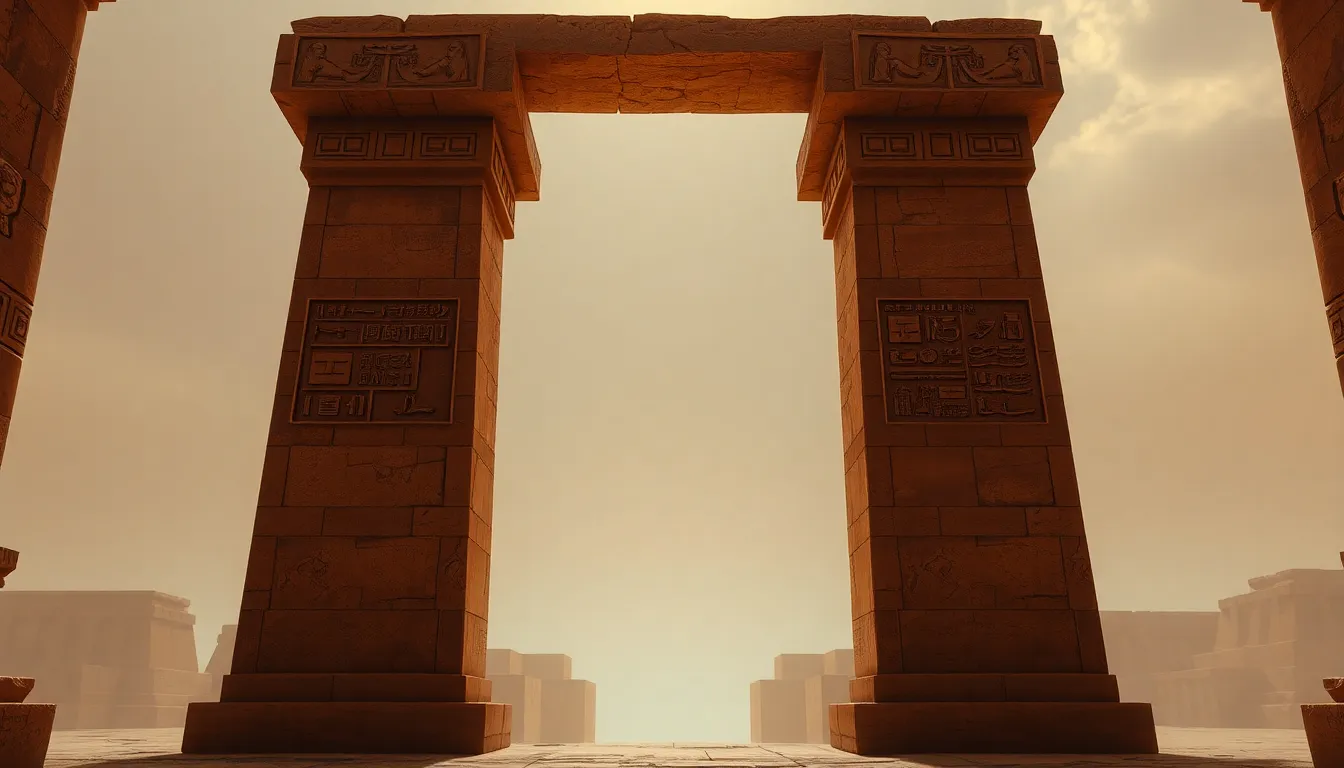The Myths of Pharaoh Seti I: The Builder of the Abydos Temple
I. Introduction
Pharaoh Seti I, a prominent ruler of ancient Egypt, is often celebrated for his monumental contributions to the New Kingdom and his role in shaping the cultural and political landscape of his time. His reign, marked by military prowess and architectural innovation, has led to numerous myths and legends that obscure the true nature of his achievements.
The Abydos Temple, built during Seti I’s reign, stands as a testament to his artistic and architectural vision. This sacred site not only served as a place of worship but also played a significant role in the religious and political life of ancient Egypt.
This article aims to debunk the myths surrounding Seti I and uncover the truths about his reign, contributions, and the lasting impact of the Abydos Temple.
II. Historical Context of Seti I
Seti I reigned from approximately 1290 to 1279 BCE, as the second pharaoh of the Nineteenth Dynasty. His rule came during a time of significant political and social changes in ancient Egypt.
- Seti I’s place in the Nineteenth Dynasty: He was the son of Ramses I and succeeded by his son Ramses II, known as Ramses the Great.
- Political and social climate: Seti I’s reign was characterized by a resurgence in military campaigns and territorial expansion, particularly against the Hittites and Libyans.
- Contributions to the New Kingdom: Seti I is credited with restoring temples and monuments, enhancing the power of the pharaoh, and promoting the worship of the god Osiris.
III. The Construction of the Abydos Temple
The Abydos Temple, also known as the Temple of Seti I, is one of the most significant architectural achievements of ancient Egypt. Located in Abydos, it served as a mortuary temple dedicated to Osiris.
- Architectural features and innovations: The temple is renowned for its grand scale, intricate carvings, and innovative design, including the use of a hypostyle hall with massive columns.
- Purpose and significance: The temple served both religious and political purposes, acting as a site for the worship of Osiris and as a means to legitimize Seti I’s rule.
- Artistic representations: The walls of the temple are adorned with detailed reliefs depicting the pharaoh’s divine birth, military victories, and offerings to the gods.
IV. Myths Surrounding Seti I
Despite his achievements, various myths have emerged about Seti I that distort historical facts.
- Misconceptions about his reign: Some believe Seti I ruled during a time of peace and prosperity, overlooking the military campaigns and political struggles he faced.
- Legends of divine ancestry: Tales of Seti I’s divine birth, suggesting he was a direct descendant of the gods, have contributed to his mythical status.
- The myth of military conquest: While Seti I was indeed a military leader, the extent of his conquests has often been exaggerated, overshadowing his diplomatic efforts.
V. The Role of Propaganda in Seti I’s Legacy
Like many pharaohs, Seti I utilized propaganda to shape his legacy and influence public perception.
- Use of inscriptions and reliefs: The temple’s walls served as a medium for Seti I to communicate his achievements and divine favor to his subjects.
- Impact of royal propaganda: The portrayal of Seti I as a powerful and divine ruler reinforced his authority and legitimized his reign.
- Comparison with other pharaohs: Seti I’s use of propaganda was similar to that of his predecessors and successors, reflecting the political norms of ancient Egypt.
VI. Archaeological Discoveries at Abydos
Archaeological excavations at Abydos have uncovered significant findings that shed light on Seti I and his time.
- Major excavations and findings: Archaeologists have discovered the remnants of the temple complex, including burial sites and artifacts related to Seti I’s reign.
- Insights from artifacts: Items such as pottery, tools, and inscriptions have provided valuable information about the daily life and religious practices during Seti I’s reign.
- Reshaping understanding: Archaeological evidence continues to challenge and refine our understanding of Seti I’s contributions and the historical context of his reign.
VII. The Cultural Impact of Seti I and Abydos
Seti I’s influence extended beyond his reign, shaping the future of Egyptian culture and governance.
- Influence on future generations: Seti I served as a model for subsequent pharaohs, particularly Ramses II, who sought to emulate his achievements.
- Role of the temple in religious practices: The Abydos Temple continued to be a center for worship long after Seti I’s death, highlighting its lasting importance.
- Legacy in modern Egyptology: Seti I’s reign and the discoveries at Abydos have become key areas of study for Egyptologists, revealing the complexities of ancient Egyptian society.
VIII. Conclusion
In summary, Pharaoh Seti I was a significant figure in ancient Egyptian history, known for his architectural achievements and military campaigns. The Abydos Temple stands as a testament to his contributions, reflecting both his power and devotion to the gods.
While myths have emerged around his reign, a closer examination reveals a ruler who faced challenges and utilized propaganda to solidify his legacy. As archaeological discoveries continue to reshape our understanding, it is crucial to explore the realities of Seti I’s life and reign, separating fact from fiction.
The ongoing research and exploration into ancient Egyptian history are vital for uncovering the truths behind the legends, ensuring that the rich heritage of this remarkable civilization is preserved and understood.




